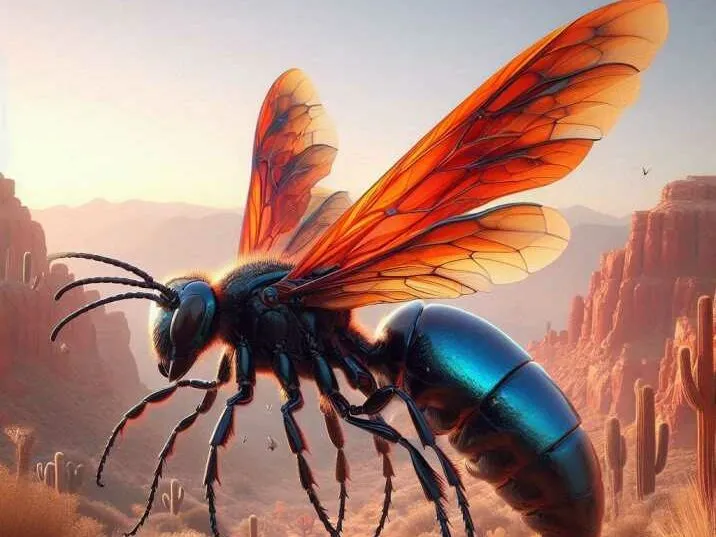What is a Tarantula Hawk
The tarantula hawk, a member of the Pompilidae family, is one of the largest wasps on Earth, renowned for its formidable size and, more notably, its extremely painful sting. These creatures are not just large; they are also solitary wasps, typically displaying a striking iridescent blue-black body coupled with vibrant orange wings. Their primary claim to fame, and the reason behind the name, is their unique hunting behavior, which centers around paralyzing and then using tarantulas as hosts for their larvae. This complex relationship between predator and prey, along with their defensive capabilities, makes the tarantula hawk a fascinating and often feared insect.
Appearance and Identification
Identifying a tarantula hawk is relatively straightforward, thanks to their distinctive appearance. They typically measure between 1 to 2 inches in length, making them one of the largest wasps you’re likely to encounter. The most prominent feature is their striking coloration: a metallic blue or black body contrasted by bright orange or sometimes rust-colored wings. The wings are often translucent, adding to their visual appeal. Be sure to look for the long, spindly legs which are crucial for their ability to hunt tarantulas. The combination of size, color, and leg structure is usually enough to distinguish them from other wasp species.
Habitat and Distribution
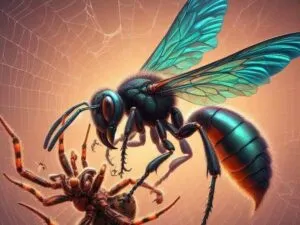
Tarantula hawks are primarily found in arid and semi-arid regions across the globe, particularly in the Southwestern United States, South America, and parts of Australia. They thrive in areas with abundant tarantula populations, their primary food source for the larvae. Their habitat often includes open spaces, deserts, grasslands, and scrublands where they can easily search for their prey. The presence of these wasps is usually a good indicator of a healthy ecosystem, especially in areas where they are native. They are solitary creatures, meaning that they do not build nests like social wasps, and each female operates independently, seeking out tarantulas and creating their own burrows.
Why Are Tarantula Hawks Considered Dangerous
Tarantula hawks are undeniably dangerous, primarily due to the extreme pain associated with their sting. While their sting is not typically life-threatening to humans, the pain level is considered one of the most excruciating in the insect world, earning it a high rating on the Schmidt sting pain index. The intensity of the sting is a result of the venom injected, which contains a unique blend of compounds designed to paralyze the tarantula. Humans can experience immediate and intense pain that can last for several minutes, accompanied by throbbing and localized discomfort. Their size and hunting capabilities make them a potential threat, especially when provoked or perceived as a threat.
The Painful Sting
The tarantula hawk’s sting is legendary for its intensity. The wasp uses its stinger to inject venom into the victim. This venom is specifically designed to paralyze the tarantula, but it also causes intense pain in humans. The pain from a tarantula hawk sting has been described as a combination of a searing burn and an electrical shock. The Schmidt sting pain index ranks it as one of the most painful stings, with the sensation described as intensely debilitating. The pain is usually immediate and can peak within seconds, leading to a brief period of paralysis and intense, localized pain.
Severity of the Sting
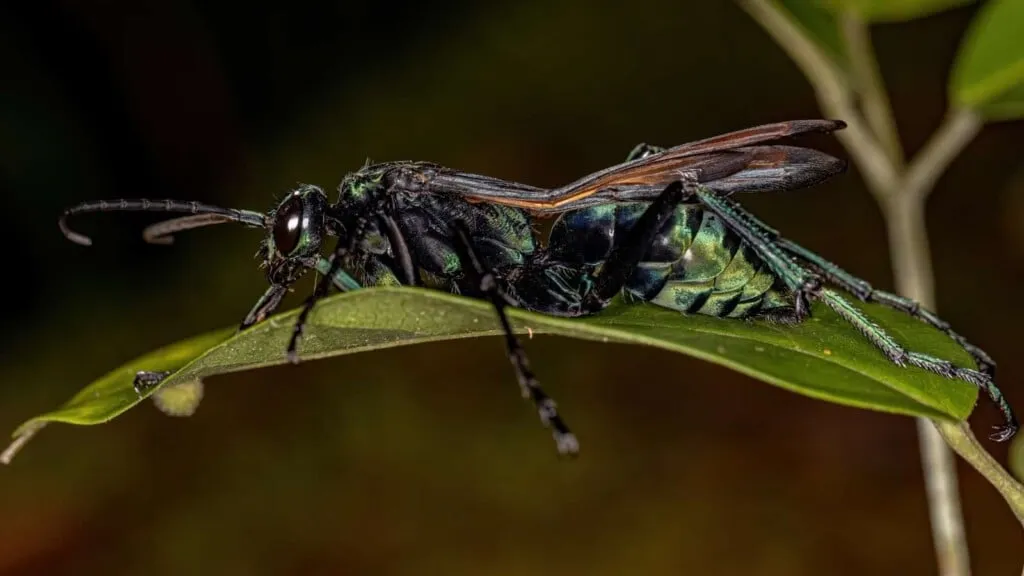
Although excruciating, the sting of a tarantula hawk is not usually fatal to humans. However, the severity can depend on individual sensitivity and the location of the sting. The primary effect is intense, immediate pain that usually subsides within a few minutes, though the throbbing can continue for several hours. Allergic reactions are rare, but as with any insect sting, individuals can experience an allergic response that could include hives, swelling, and difficulty breathing. If any signs of an allergic reaction occur, seek immediate medical attention. Otherwise, the primary concern is the intense, localized pain, which can be managed with pain relievers and cold compresses.
The Tarantula Hawk’s Hunting Behavior
The hunting behavior of the tarantula hawk is a dramatic display of predatory skill and insect ingenuity. The female wasps are the primary hunters, actively seeking out tarantulas in their burrows. The wasp will locate the tarantula, often by scent, and engage in a brief, but intense battle. The wasp uses its stinger to inject venom, specifically designed to paralyze the spider. Once the tarantula is immobile, the wasp will drag it back to its burrow or create a new one, where it will lay a single egg on the spider’s abdomen. This egg will hatch, and the wasp larva will feed on the paralyzed but living tarantula.
The Hunting Process
The hunting process is a fascinating display of nature’s efficiency. The female tarantula hawk will first locate a tarantula. The wasp will then carefully approach the tarantula, often engaging in a brief fight. The wasp, utilizing its agility and powerful sting, will quickly paralyze the spider. The wasp then drags the paralyzed tarantula, sometimes many times its size, to a pre-existing burrow or creates a new one. The wasp will then lay a single egg on the spider’s abdomen, and the wasp larva will hatch and consume the still-living tarantula from within. This process ensures the larva has a continuous food supply, as the spider remains paralyzed but alive for weeks.
The Role in the Ecosystem
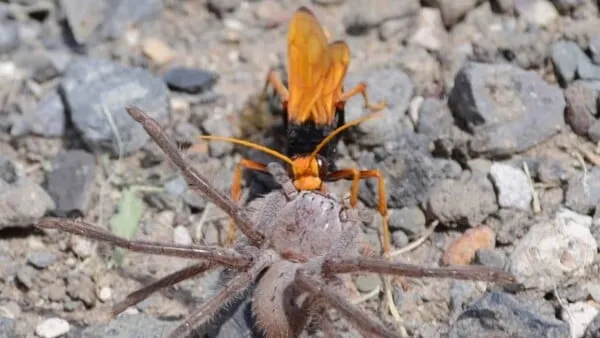
Tarantula hawks play a vital role in their ecosystems. As predators of tarantulas, they help regulate the spider population, which in turn, impacts other species that the spiders prey on. They also contribute to the cycling of nutrients in the environment. Because they are solitary hunters, they do not disrupt ecosystems in the same way that social insects do, instead maintaining a more balanced relationship with their environment. In this way, they are an important element of biodiversity in their native habitats. Their presence is a strong indicator of a healthy environment, supporting both the spider and the overall ecosystem.
How to Avoid Tarantula Hawks
Avoiding tarantula hawks is primarily about respecting their space and understanding their behavior. Given that their stings are painful, it is wise to take precautions when in areas where they are known to be present. Avoid unnecessary contact and do not provoke them. These wasps are not aggressive, but they will defend themselves if they feel threatened. The best approach is to be observant and give them plenty of space. During peak activity periods, especially during the warmer months when they are most active, exercise caution in their known habitats.
Safety Precautions
If you are in an area where tarantula hawks are present, there are some safety precautions that can be taken to minimize the risk of being stung. Wear long sleeves and pants when possible, especially when working outdoors or hiking. Avoid wearing brightly colored clothing, which can attract insects. Be aware of your surroundings, and avoid disturbing their nests or interrupting their hunting activities. If you see a tarantula hawk, observe from a distance and do not attempt to touch or approach it. Clear any outdoor areas, like patios or yards, of potential habitats that could attract tarantulas, as this may reduce the likelihood of these wasps appearing.
What to Do if Stung
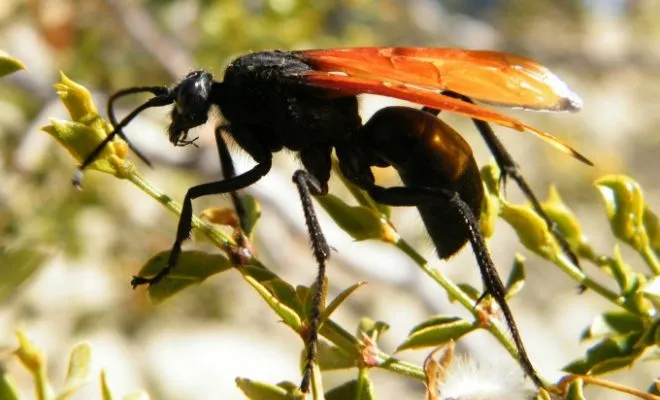
If stung by a tarantula hawk, the first step is to remain calm. The pain can be intense, but it is usually not life-threatening. Apply a cold compress or ice pack to the area to reduce swelling and pain. Take over-the-counter pain relievers such as ibuprofen or acetaminophen to manage the pain. Monitor for any signs of an allergic reaction, such as difficulty breathing, swelling, or hives, and seek immediate medical attention if these symptoms occur. It is crucial to stay calm and focus on managing the pain until it subsides. While the pain can be intense, it is usually manageable, and recovery is typically complete within a few hours.
Interesting Facts About Tarantula Hawks
Tarantula hawks possess a wealth of intriguing characteristics that make them a source of fascination for entomologists and nature enthusiasts alike. Their life cycle, hunting strategies, and the sheer intensity of their sting have contributed to the legends that surround them. They are not just dangerous; they also represent a vital role in the ecosystem and a testament to nature’s diversity. Their existence tells us how specialized and adapted species can be, making them a symbol of the wonder and complexity of the natural world.
Lifespan and Behavior
The lifespan of a tarantula hawk can vary depending on environmental conditions, but typically, they live for several months. The females are the primary hunters, while the males primarily feed on nectar and do not have stingers. Their behavior includes complex mating rituals and a solitary life cycle, where each female is responsible for hunting, nest-building, and laying eggs. They are most active during the warmer months, and their behavior is closely tied to the availability of tarantulas, the timing of which is crucial for their survival and the continuation of their species.
Conservation Status
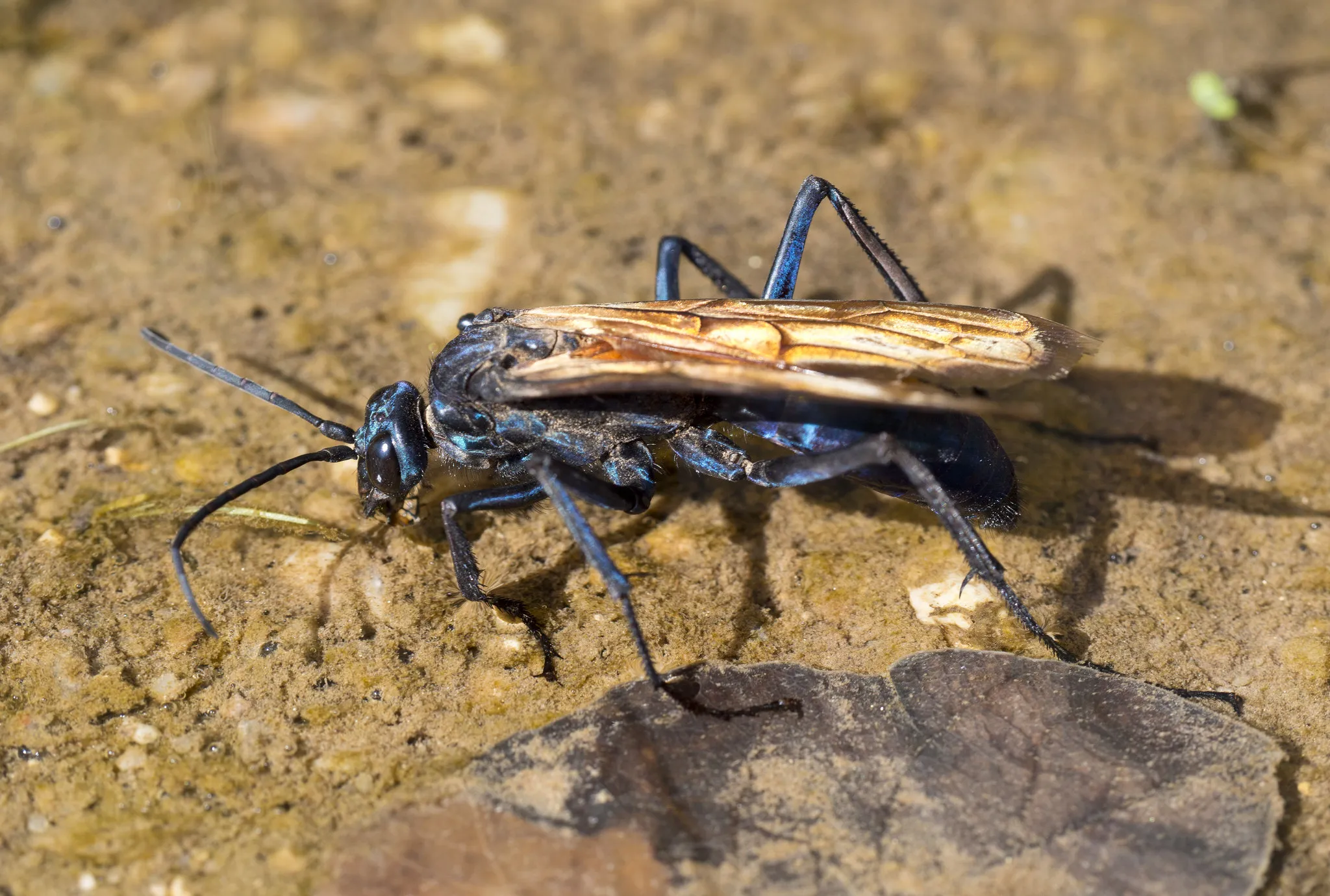
The conservation status of tarantula hawks is generally considered to be stable. They are widespread across their natural habitats, and the population has not declined enough to warrant conservation efforts. However, habitat loss and the use of pesticides can have an impact on their numbers, and these factors should be monitored. The future of tarantula hawks is closely linked to the preservation of their habitats and the maintenance of healthy tarantula populations. Awareness and understanding of these fascinating insects are vital for preserving their future and the critical roles they play within their ecosystems.
